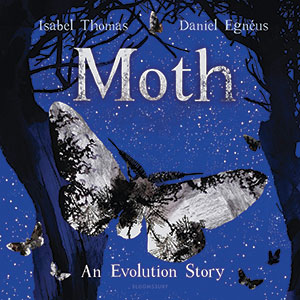PreS-Gr 1–Thomas and Egnéus show how adaptation and natural selection work in the evolutionary process in order to change a species. In Great Britain, when industry heavily relied on coal, environmental factors affected the survival rates of the peppered moth, because predators could now see what was once camouflaged. The text and illustrations are clear and move at a steady pace with a summary in the back matter, which solidifies the content. Despite the lack of source material, the value of this text is high. Children will understand how the environment can change an animal’s survival rate and the passing of its genetic information. Moths as a subject do not usually garner high circulation rates, but if this book is placed in a display, the cover will attract attention. The illustrations throughout are mixed media, but the cover literally shines: silvery moths against a night sky is an attention grabber. Originally published in Great Britain in 2018, this text will enhance any juvenile nonfiction collection.
VERDICT Buy this title for its clear presentation





Be the first reader to comment.
Comment Policy:
Comment should not be empty !!!